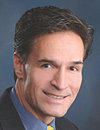
Mike Murphy
Why would anyone want to slow the process of decreasing energy consumption in commercial buildings? Perhaps because it is risky business, and it demands that building owners and commercial contractors follow normal risk management practices, rather than dive head-first into untested waters.
According to an article published in Southeast Construction, by authors David Odom and Richard Scott, two characteristics of most sustainable or green buildings are: “1) the use of innovative products . . . and 2) the implementation of new design and construction techniques. The intent of these new products and procedures is to build a structure with minimal environmental impact throughout the building’s life.”
Odom and Scott laud the noble intent, but note that what usually ensues is that performance of buildings is often adversely affected.
Odom and Scott, of the Liberty Building and Forensics Group in Orlando, a firm specializing in investigations of building failures, seem to focus most of their concern on moisture and mold investigations as they apply in the Southeast. That area of the country, particularly Florida, has had more than its fair share of moisture problems with building practices that have promised to hold the power of the universe only later to be discovered not to hold water - literally. Therefore, it seems reasonable for intelligent people (especially those in areas where moisture problems are prevalent) to express doubts regarding any new building practices given the track record of some past building failures.
A case in point from the article: “Early generations of exterior insulation and finish systems (EIFS) resulted in many catastrophic moisture and mold conditions.” Later generations of EIFS systems were modified to eliminate many of the rainwater intrusion problems. But, the damage was done. What was learned from such experiences was that significant changes in design and construction practices could have short-term negative effects.
As the Florida duo would agree, there is no rush to throw the proverbial baby out with the bath water. New green products cannot be abandoned; however, they must be understood and most importantly, they must be adequately tested.
BUILDING BABY STEPS
As the Department of Energy (DOE) has recently launched an initiative that proposes to convert all commercial buildings in the United States to net-zero energy consumption by 2025, it would seem that some camps are at odds with each other. Many green building practices could lend to net-zero buildings, and better buildings in the future. Some of those same green building practices could create short-term negative effects.One of the first LEED-Gold buildings in the United States was found to provide much less efficiency than had first been expected. The building’s HVAC load was calculated incorrectly due to an overpromise of insulation value in the walls from an improperly applied new product. As building commissioning of LEED-certified buildings becomes much more stringent and the knowledge is transferred to pre-construction teams, problems like this will likely go away. Problems such as irreparably damaged buildings, which have been condemned due to mold, do not go away. Those buildings are simply torn down.
According to research, commercial buildings’ HVAC systems typically consume around 40 percent of total building energy consumption with some building types consuming a much higher percentage.
Many new products that are flooding the market, touting that they help to achieve LEED points for certification, are being embraced by designers as they specify for green building projects. Most do not have the time to properly research the new products they are specifying. They usually rely on sales literature.
The green claims are flying fast and high. Mechanical contractors should not risk blame for a construction error that is more largely the part of an unfamiliar designer’s error. The DOE should not risk the progress that the green building movement has made to this point.
It may be time for everyone to step back, assess the risk, and move forward more cautiously.
Murphy’s Law:Sleep with one eye open.
Publication date:08/25/2008

Report Abusive Comment